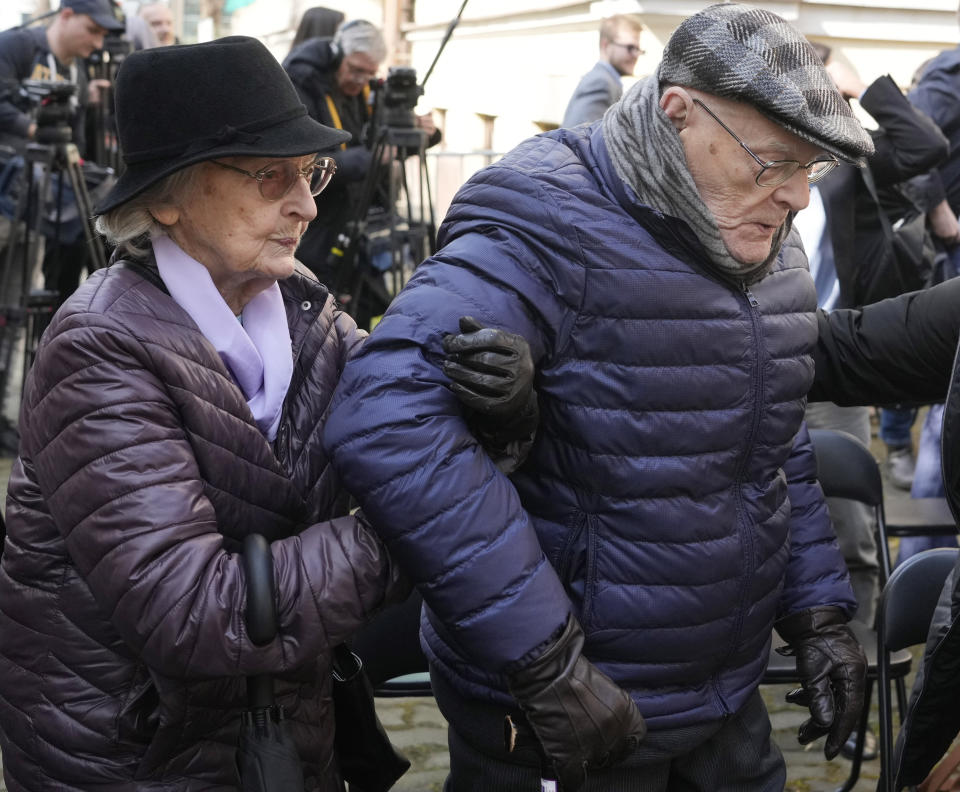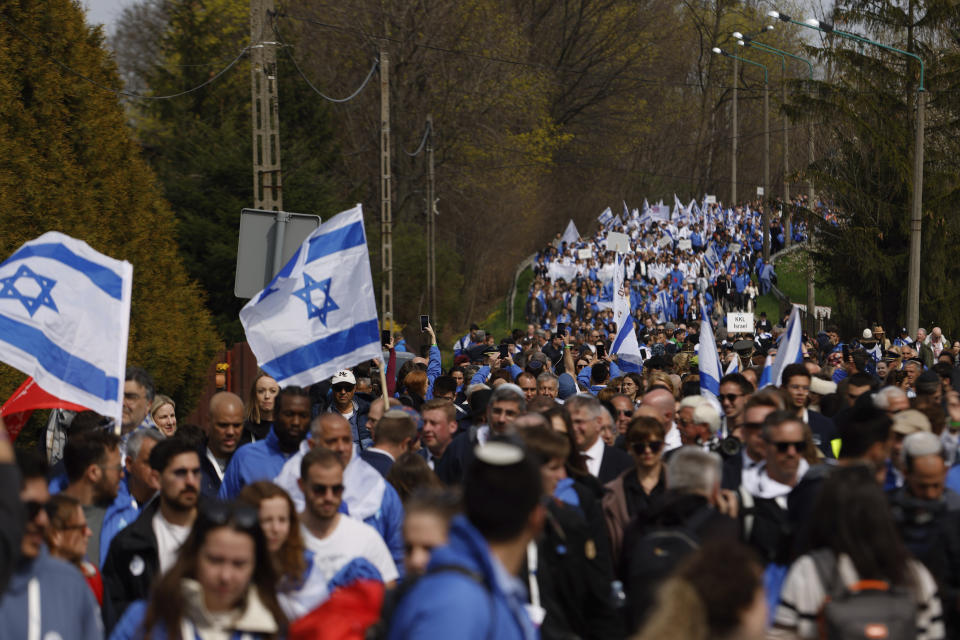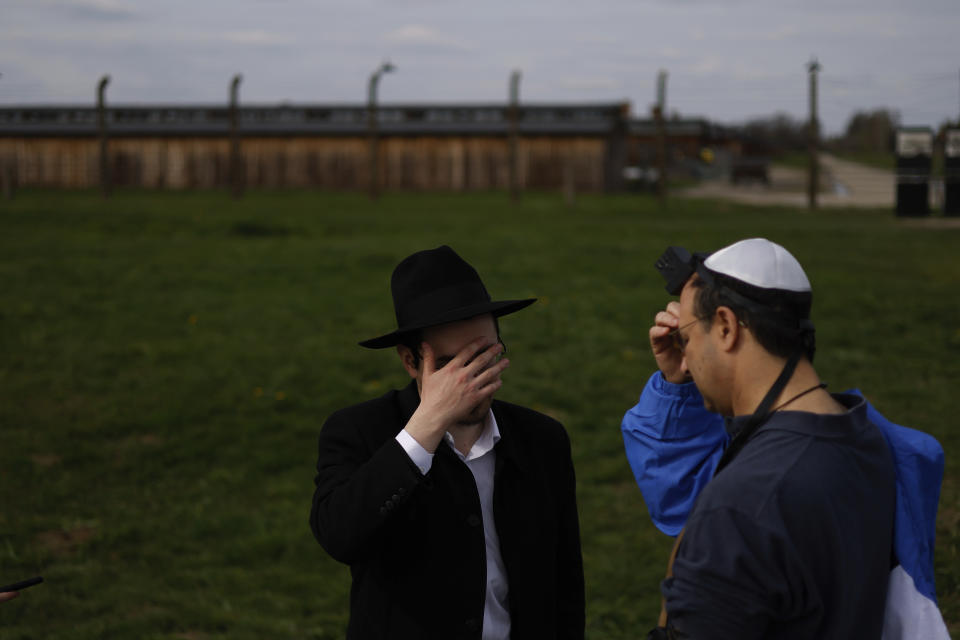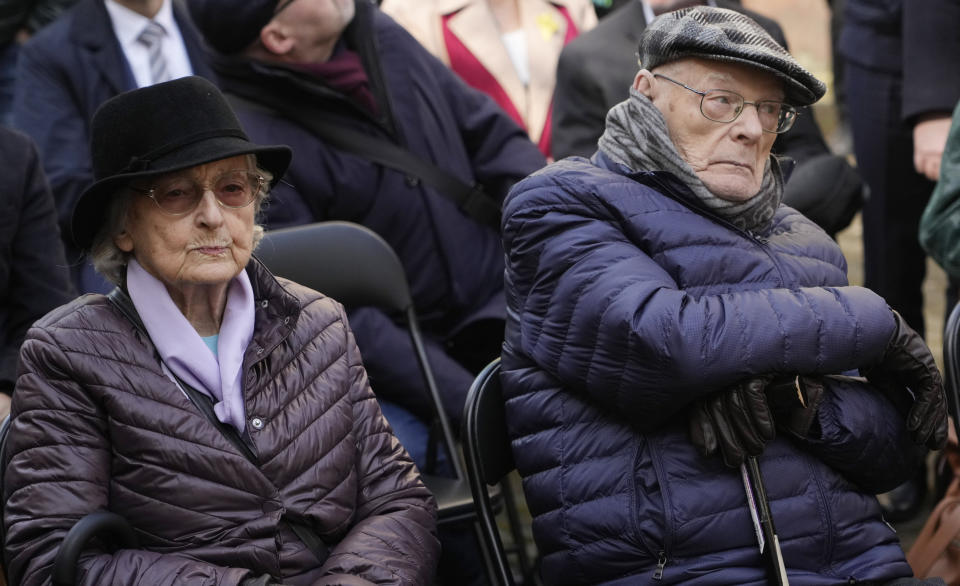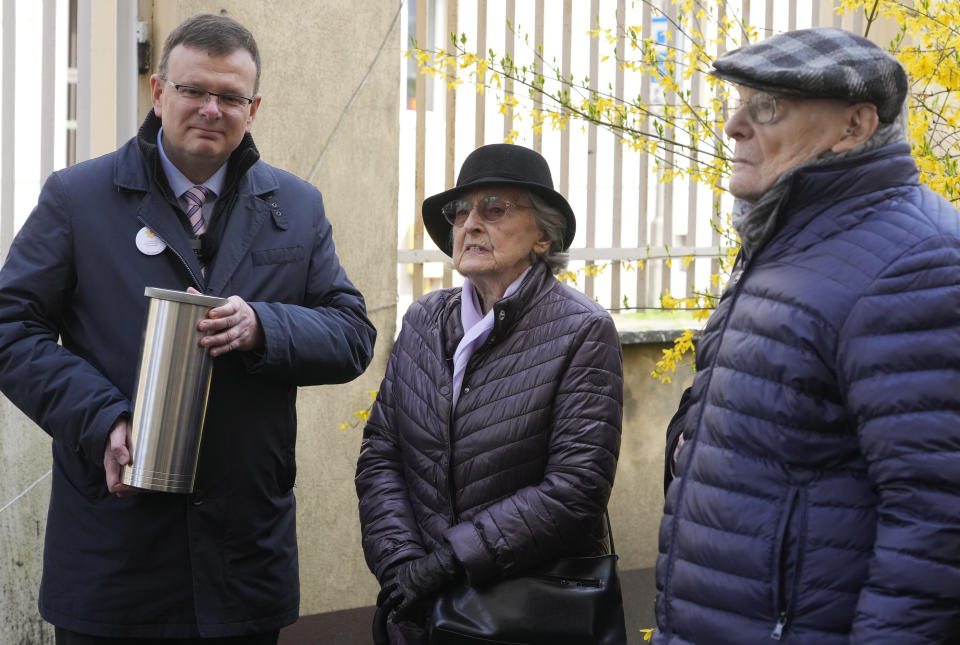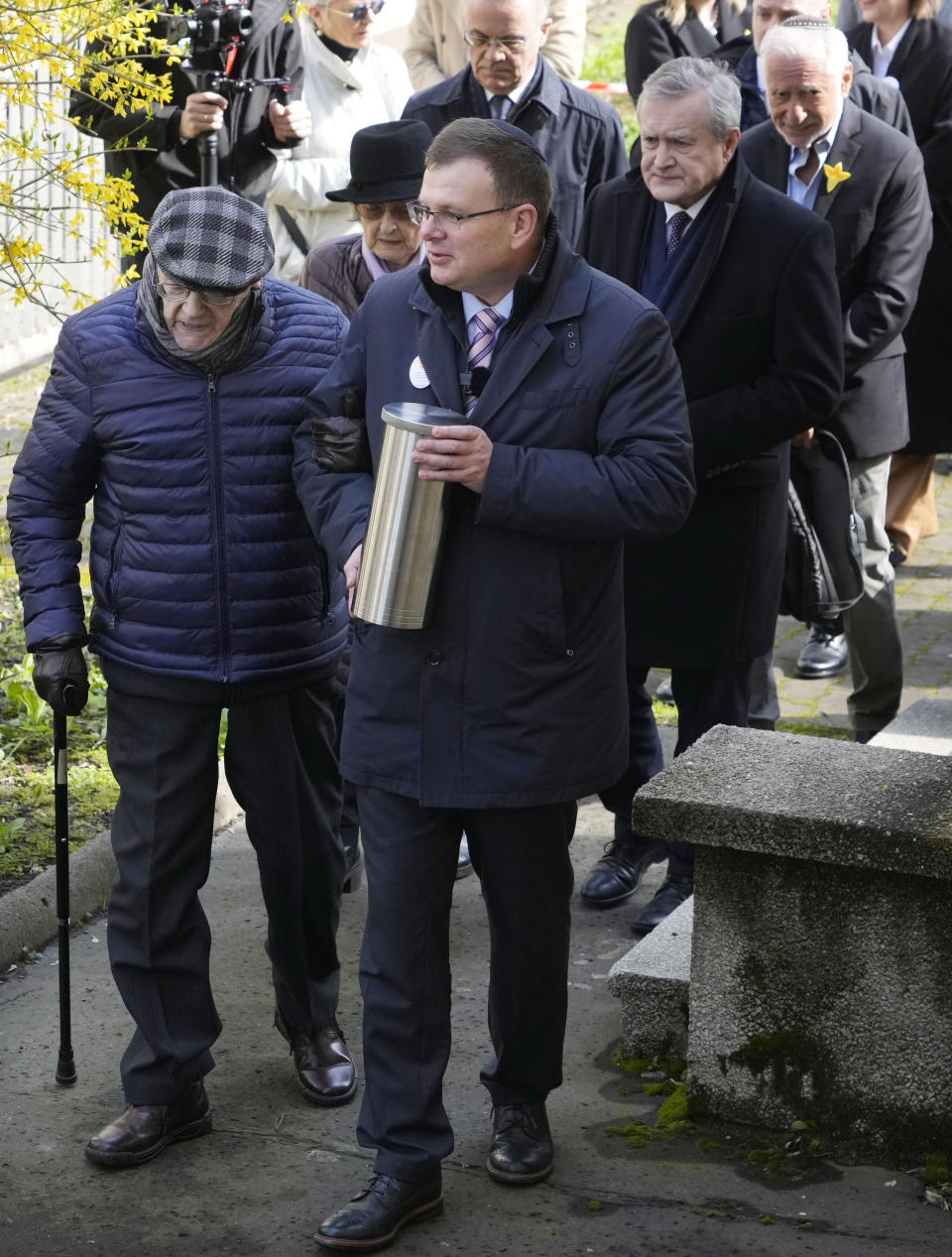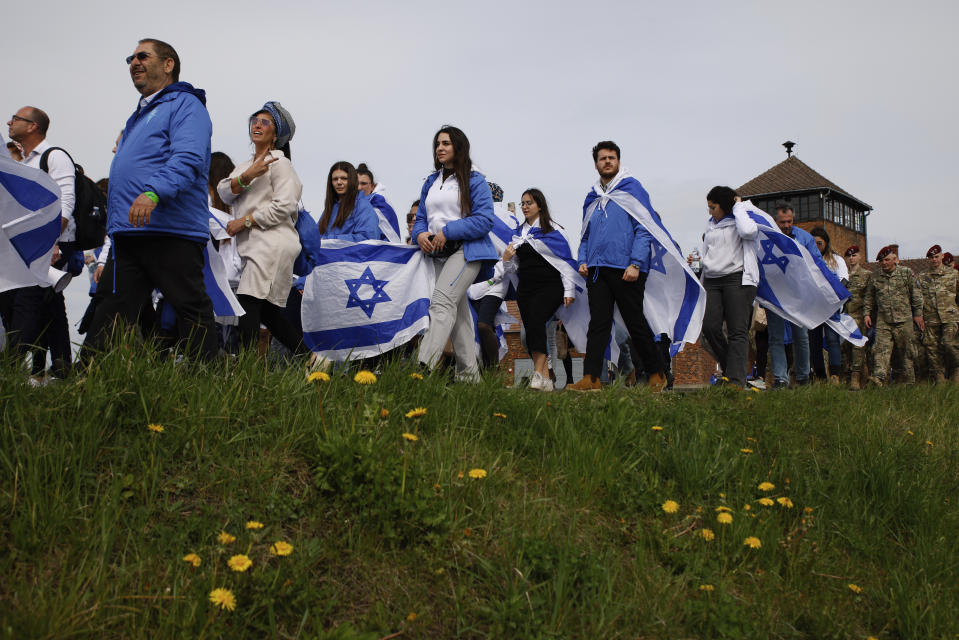Warsaw Ghetto Uprising commemorated on 80th anniversary
- Oops!Something went wrong.Please try again later.
- Oops!Something went wrong.Please try again later.
WARSAW, Poland (AP) — Presidents and Holocaust survivors and their descendants are commemorating the 80th anniversary of the Warsaw Ghetto Uprising on Wednesday with a poignant sense that the responsibility for carrying on the memory of the Holocaust is passing from the witnesses to younger generations.
The anniversary honors the hundreds of young Jews who took up arms in Warsaw in 1943 against the overwhelming might of the Nazi German army.
There are no surviving fighters still alive. Marek Edelman, the last surviving commander, died in 2009. He remained in Poland and helped keep alive the memory of the revolt in his homeland. Simcha Rotem, a fighter who smuggled others out of the burning ghetto through sewage tunnels, died in 2018 in Israel, where he settled.
The small number of surviving witnesses today were mostly children at the time of the revolt.
Official commemorations will be attended by presidents Isaac Herzog of Israel, Frank-Walter Steinmeier of Germany and Andrzej Duda of Poland. The main event will take place in front of the Memorial to the Ghetto Heroes on the hallowed ground where the fighting erupted, with a visit later to Warsaw's Nozyk synagogue and a evening concert by the Polish-Israeli Youth Symphony Orchestra.
The three leaders represent nations forever shaped by World War II.
Israel was founded after the war to give Jews a home where they could finally be safe after centuries of persecution in Europe.
Germany, which inflicted death and destruction across the vast areas that it occupied, is the perpetrator nation that for decades has acknowledged its crimes and expressed remorse.
And Poland, where Europe’s largest prewar Jewish population lived and which was invaded and subjected to mass death and destruction, carries out its responsibility of preserving sites like the ghetto and the Auschwitz death camp, while also honoring the massive losses inflicted on the entire nation. Some 6 million Polish citizens were killed during the war, about 3 million of them Jews and the others mostly Christian Poles.
Avi Valevski, a professor of psychiatry from Israel whose father, Ryszard Walewski, a doctor who led a group of some 150 warriors in the revolt, visited Warsaw with his wife, describing it as “more than an emotional moment.”
Valevski, 72, is working to carry on a history that his father rarely spoke to him about but also carries an emotional burden. He was young when his father became ill and died 1971, but today pores through the documentation his father left behind, and is trying to get one of his stories translated into English and published.
“He was quite proud of his fight against the ‘Nazi beast’ — his words — but I suppose that the feeling of apprehension entered my soul until now,” Valevski said.
The Germans invaded Poland in 1939 and set up the ghetto in 1940. It was the largest of many ghettos across occupied Poland.
The ghetto initially held some 380,000 Jews who were cramped into tight living spaces, and at its peak housed about a half-million souls. Life in the ghetto included random raids, confiscations and abductions by Nazi soldiers. Disease and starvation were rampant, and bodies often appeared on the streets.
The Jewish resistance movement in the Warsaw ghetto grew after 265,000 men, women and children were rounded up in the summer of 1942 and killed at the Treblinka death camp. As word of the Nazi genocide spread, those who remained behind no longer believed German promises that they would be sent to forced labor camps.
A small group of rebels began to spread calls for resistance, carrying out isolated acts of sabotage and attacks. Some Jews began defying German orders to report for deportation.
The uprising began when the Nazis entered the ghetto on April 19, 1943, the eve of the Passover holiday. Three days later, the Nazis set the ghetto ablaze, turning it into a fiery death trap, but the Jewish fighters kept up their struggle for nearly a month before they were brutally vanquished. That was longer than some countries held out.
Some of those participating in Wednesday’s observances traveled from as far as Australia and the United States to honor those who perished, but also the rich Jewish civilization that is their heritage. Many hold their own private ceremonies, paying tribute to those departed at the Jewish cemetery or at various memorials on the former grounds of the ghetto.
There are various events, museum openings and other ceremonies, marking the anniversary throughout the week.
“I’m a New Yorker but there is something that keeps drawing me back here,” said Barbara Jolson Blumenthal, whose parents survived the Warsaw Ghetto after a Pole helped them to escape and hide on the “Aryan” side of the city, while many other members of their families were murdered.
“And although such horrible things happened here, I remember my parents saying that they loved it here, that it was so wonderful here, and I walk the streets and I wonder if this is where my family was and where they walked,” Blumenthal said.
She returns often to Poland to work to preserve the memory of her family and her people, She spoke from a cafe of the POLIN Museum of the History of Polish Jews, a monument to the 1,000 years of Jewish life on Polish lands.
Blumenthal is on the board of a new Warsaw Ghetto Museum now being created, and is seeking to have a tiny closet where her parents hid made into an exhibit. A decade ago she reburied her grandmother, who died during the war while hiding as a Catholic, in the Jewish cemetery.
